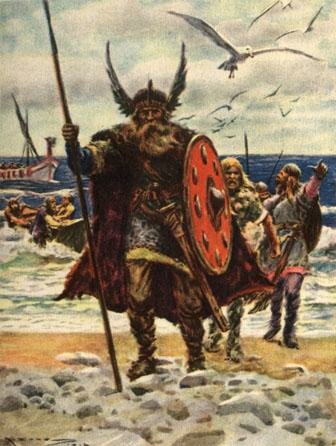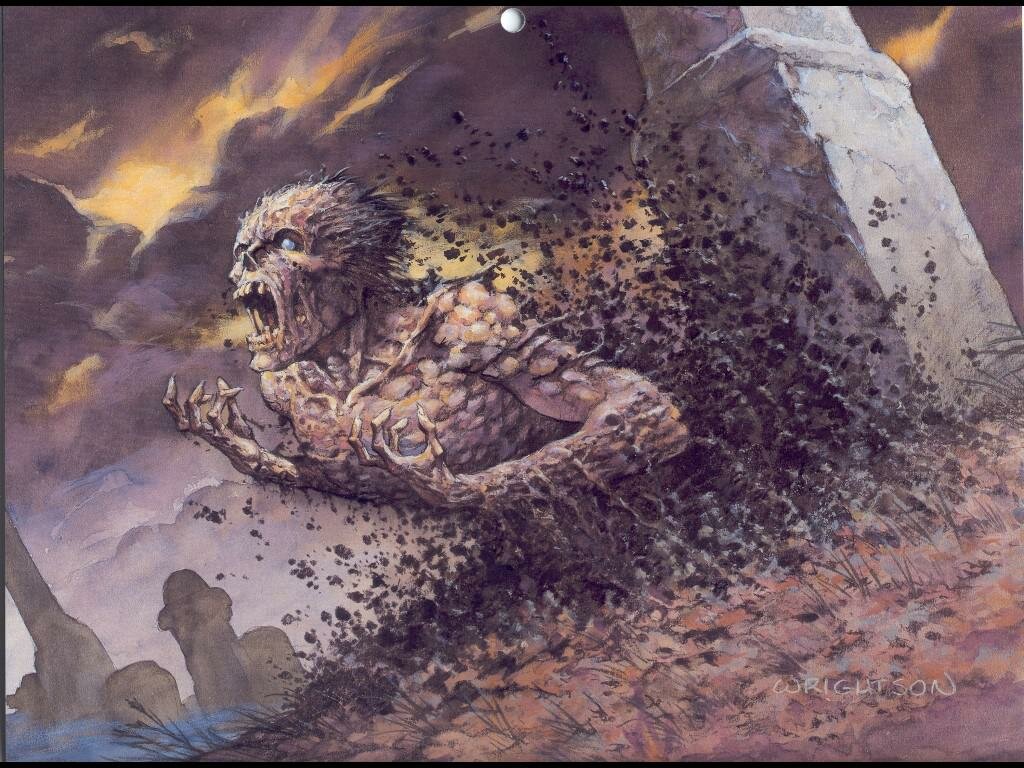10 Interesting Firearms History Facts
Suggested by SMSEver since the invention of gun powder, man has been developing firearms that shoot faster, longer and more accurately than the generation before him. Firearms have become a part of history. They do not confine themselves to the areas of military lore, but enter realms of politics, exploration and adventure. If you have not been an avid student of firearms history, there may be some facts that will surprise you.
10. The Evasive Inventor of Barrel Rifling

The term ‘rifle’ has become synonymous with that of a long barreled gun. But ‘rifling’ is what you find inside those long barrels, and shorter ones also. Rifling refers to grooves created in a spiraling pattern inside the cylinder of the barrel. Because bullets are oblong objects, like footballs, they need that same ‘spin’ put on them that a quarterback puts on the football when he throws it, to keep them flying in the direction that they are aimed.
Rifling inside the barrel affects both the speed and the trajectory of the bullet, and not all guns have the same type of rifling. The length, shape and weight of the projectile that will be used in a gun will be part of the determining factor as to the rifling used in the gun. Different size bullets have different ‘twist rates’.
I could give a long list of names of contributors the use and improvements of gun barrel rifling, but who was that first individual who came up with the idea? His name…remains a mystery. No one seems to know. The best that historians have been able to do is narrow it down to a time period and general vicinity: Late fifteenth century, somewhere around Augsburg, Germany. Many a marksman remains indebted to this anonymous inventor.
9. Fergie Comes to America in 1776

Yes, that’s correct ‘Fergie’ did indeed come to America in 1776. Of course, this Scottish born Fergie was a man, not a woman, and he came leading a group of 100 men carrying Ferguson rifles. His name was Patrick Ferguson.
Ferguson had greatly impressed the Master General of the Ordinance by firing his gun at a steady rate of four to five shots a minute while walking towards the target, loading and firing as he went. Since all rifles of the period were then muzzle loaders, Ferguson’s breech loading rifle allowed a much faster rate of fire than anything else available, on either side of the ocean.
Unfortunately, Ferguson was first wounded and then eventually killed in battle, and his company scattered. Only one or two of those 100 rifles are known to exist today. Even though the Ferguson Rifles served well in their limited use, it wasn’t until 1819 that breech loading rifles became the standard for military use by the issuing of the Hall Carbine to United States military.
8. The Percussion Principle Preacher

Shortly prior to the 1819 date of the breech loader becoming the standard, another important development along the history path occurred. It was in 1807, the same year that Robert Fulton revolutionized river travel with the introduction of the steamboat. That important point in firearms evolution was the patenting of a percussion firing system by the Reverend Alexander James Forsyth in Scotland.
The Reverend had become frustrated at his difficulty in using his flintlock firearms for bird shooting. The puff of smoke from the ignition and related delay gave birds sufficient warning to escape his aim. The Reverend used a mixture of newly discovered fulminating powders to create an explosion that was ignited by concussion.
The percussion principle, combined with the ongoing development of breech loading, became the turning point necessary to take firearms from its former slow development to a series of fast paced improvements in both the areas of ammunition and the guns themselves.
7. The Swiss Didn’t Just Make Army Knives

The invention of the self-contained cartridge has been credited to J. Pauly from Switzerland. It followed shortly behind the percussion firing system, just a year later, in 1808. Both Napoleon and the Czar of Russia hailed Pauly’s guns for this important piece of ingenuity. The ability to load a gun with a self-contained cartridge would simplify and speed the reloading process immensely. Something that military strategists, like Napoleon and the Czar, greatly appreciated.
Pauly’s casings were made of paper, rather than the brass that has become the standard of today, but it nevertheless led the way to a whole new approach to firearm’s ammunition. It was the French gunsmith, Casimir Lefaucheux, who patented one of the earliest self-contained, and pin fired, cartridges, but that was not until 1827. Then in 1846 M.Houiller improved on the Lefaucheux cartridge by introducing a fully metallic casing of copper brass. The one primary limitation of the metal casing, which hampered its initial acceptance, was the added mechanical complication of removing the expended cartridge from the weapon after firing. Eventually the value of the metal cartridge simply pushed gunsmiths to become creative in the developing of ejection systems as well.
6. Good Things Wait for Good Marketers

The Colt revolver has been around for over a hundred years and still remains a favorite for gun enthusiasts and collectors. Samuel Colt introduced his handgun with the revolving mechanism that was operated by cocking the gun’s hammer, at the Great Exhibition of 1851 in London, which claimed over 6 million visitors. It was an instant hit on the international scene. The ‘six-shooter’ became the gun to have.
It would be easy to assume that Samuel Colt was, therefore, the inventor of the revolver style handgun. That assumption would be wrong. The multi-chambered gun operated by the gun’s hammer had been invented over 30 years earlier by Captain Artemus Wheeler of Concord, MA and his assistant Elisha Collier. Wheeler had patented the multi-chambered gun in 1818 and his assistant improved upon his design by connecting the chamber to the hammer.
Wheeler and Collier, the minds behind the great improvement in handguns, as with many inventors, were not as skilled in marketing as they were in gunsmithing. It took a man like Samuel Colt to bring this new ‘technology’ to the forefront and sell the world on the idea that this was a change for the good.
5. Small Guns Kill Big Men

The picture above is one taken by the FBI of the actual, one-shot Philadelphia Deringer used by John Wilkes-Booth to shoot and kill President Abraham Lincoln. A very small, pocket-sized gun intended for ease of concealment and shooting at very close range. In spite of its small size, at close range, it was still quite deadly.
The pistol that Booth required loading of the powder and ball; the convenience of cartridges was not yet available. Because a mis-fire in these small one-shot pistols would then leave you defenseless, the pistols were often sold in pairs. The pairs were not meant for dueling, like the bigger dueling pistols, but to allow you an extra shot by caring two of the small firearms with you. Booth’s Deringer happened to contain another unique characteristic to it. The rifling inside the barrel twisted counter-clockwise, which was opposite of most Philadelphia Deringers produced.
The Philadelphia Deringer was designed by Henry Deringer. Its unique design was widely copied by other gun manufacturers until the name ‘derringer’ (mis-spelled with an added ‘r’) became the common name for any small pistol that was not either a revolver or an automatic. Their small size continues to make them a popular concealed carry weapon today, and you can find them in many different styles and calibers.
4. Kentucky Rifles Aren’t From Kentucky?
That’s correct. The common term for the long-range rifles which were used in the frontiers of America in its early years has been the Kentucky Rifle. However, the name didn’t come about because the rifle’s origin, but a song which referred to them as such. The rifles were being widely used in the Kentucky frontier by the men who came to explore and settle the territory, but these men had brought the rifles with them. Their true origin was Pennsylvania.
Since rifling of barrels originated in Germany, Germans who settled in the Pennsylvania area brought their understanding of gunsmithing with them to their new homeland. The stocks were generally made of maple, and the barrel itself was anywhere from 42” to 46” long. True gun historians now will refer to this rifles as KY/PA rifles or Kentucky/Pennsylvania rifles, just to give them a truer identity and resolve any north-south rivalry.
3. The Peacemaker Turned Rebel


General John T. Thompson, shown above, invented the term ‘sub machine gun’ and the small, rapid-fire machine gun that we are most familiar with, and that bears his name. It was during WWI that Thompson began developing his rapid fire gun. His vision was to provide an auto-fire gun for use in trench warfare, that could help to win and end the war. His company, Auto-Ordinance, named their project Annihilator I. Unfortunately, the first shipment of the ‘Annihilators’ was not released until the day the war ended.
In the post-war climate, the company chose to market the gun under a less aggressive title and re-named it the Thompson Submachine Gun. Although most of the sales of the gun were to military and federal agencies, the gun gained its biggest notoriety from its use by Prohibition era gangsters; a far cry from Thompson original intent.
Although the Thompson had found its way into small military skirmishes in between the two World Wars, it wasn’t until WWII that it took its place as the favored military weapon that General Thompson had envisioned it to be.
2. The ‘Thousands’ of Musketeers

We’ve all heard of the ‘Three Musketeers’ (the guys with the fancy hats, not the candy bars). We’ve seen movies about them and read stories about them. In reality, there were thousands and thousands of ‘musketeers’. It was a very common term for what we would not call infantrymen. But there are few other misnomers about these gallant gents, besides their limited number.
In the movies, the ‘musketeers’ seem to be always brandishing their swords. They are quite skilled at fencing with their slim, sharp-pointed foils. However, as the name implies, a musketeer’s primary weapon was not the sword, but a musket. So why do we never see the musketeers carrying or shooting muskets in these films?
If you look closely at the picture above, which shows an enactment of musketeer warfare, you will understand why. Muskets were large, heavy weaponry, particularly during the era depicted in these films. You could not ‘gracefully’ shoot a musket. Generally, they were propped on a shooting post, as seen in the photo, to help stabilize the aim. Even then, the musket balls tended to bounce its way through the barrel, as it was being projected, making it very inaccurate in its final trajectory.
No, Hollywood was wise to have their fancy gents leave their muskets behind. They would simply have gotten in the way.
1. The Shot Heard Round the World

This phrase is generally used to refer to the first gun shot in the American Revolutionary War. Our view backwards towards historic events often gets tainted with modern day lenses. The weapons used by the militia to fight against the British were, for the most part, not military weapons. Those that had muskets or rifles used them, but few of those had the bayonets that the British fighting weapons carried.
No one really knows for sure what weapon fired the first shot, but it may have been what was referred to as a ‘fowler’, a bird gun. These were smooth barreled guns that would shoot a handful of ‘bird shot’ or a small musket ball. These were, of course, the precursor to our modern day shotguns.










